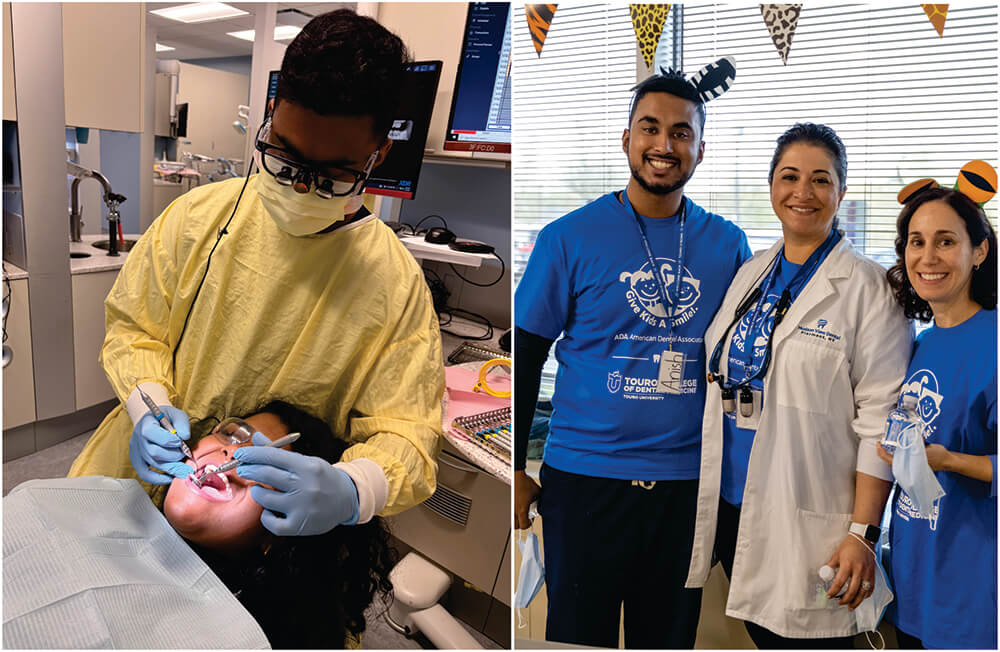Teaching, Not Just Treating
Touro Dental Alum Paving the Way to Increase Access to Dental Care Nationwide

For Anish Cheriyan, dentistry was an obvious career choice. Growing up on Long Island, New York, with parents who immigrated from India, Cheriyan’s family had major dental anxiety. As clichéd as it sounds, Cheriyan wanted to help people, and he also wanted to bust the myth that a dental office is a scary place. With a penchant for science, children and teaching, Cheriyan’s ultimate goal was to become a pediatric dentist and open his own private practice.
“Pediatric dentistry is not just about treating kids,” says Cheriyan. “It’s about teaching them, their parents, and sometimes even their grandparents, about basic oral hygiene and how to keep their teeth for as long as possible. It affects the whole community.”
A biology major at Stony Brook University, Cheriyan chose Touro College of Dental Medicine (TCDM) for its stellar faculty, motivated and friendly students, and advanced dental technology. He is currently a pediatric dental resident at Woodhall Medical Center, on the way to achieving his dream career.
As a child whose family didn’t focus on dental care, Cheriyan was greatly interested in health disparities and access to dental care for children. Taking that concern to the next level, Cheriyan took the opportunity to research the issue while in dental school under the mentorship of Dr. Jaffer Shariff and Dr. Daniela Gurpegui. “Touro College of Dental Medicine started its pediatric clinic in 2018. My research looked at how Touro has affected the population we serve over the course of the five years since it opened—how efficient it was in addressing the community’s health, were there any shortcomings and how we could create a plan to address any unmet needs,” said Cheriyan.
He and the research team learned that as age increases, patients are more likely to present with cavities. He found that recent immigrants had a higher risk for cavities and, surprisingly, they found that children from higher-income zip codes have a higher risk for cavities. It’s hard to understand why that is, but the hypothesis is that some of the kids studied may have been snacking much more than usual while they were home from school during COVID and professional parents were busy working. They are looking into other factors as well and planning to study what causes decay among children from high-income areas.
Surprising Research Findings
In terms of next steps, Cheriyan shares that TCDM already has an elementary school-based program called Give Kids A Smile that sends dental students into schools to teach about oral hygiene. “I recommend targeting the schools in our service areas that were found to have the highest rate of cavities. The Touro dental students can bring this program to the schools, educate about dental care and do exams for the kids, and then have the children come to our clinic for follow-up dental work. By screening a lot of patients from schools in high-decay areas, we can do a better service for the community we serve.”
Besides school-based education, Cheriyan has big plans that may impact dental care across the nation. “Every dental school has a different approach for treating the community and for assessing dental health. We want to publish how we do it at Touro and standardize the data assessment, so every dental school clinic uses the same process. Then we’d be able to compare data and assess how communities around the country are doing with dental hygiene and outcomes,” explains Cheriyan.
Ultimately, the information from Cheriyan’s research has the power to provide health policymakers with valuable insight that will increase access to care. Now all he has to do is make the dentist’s office a friendly and phobia-free place!

